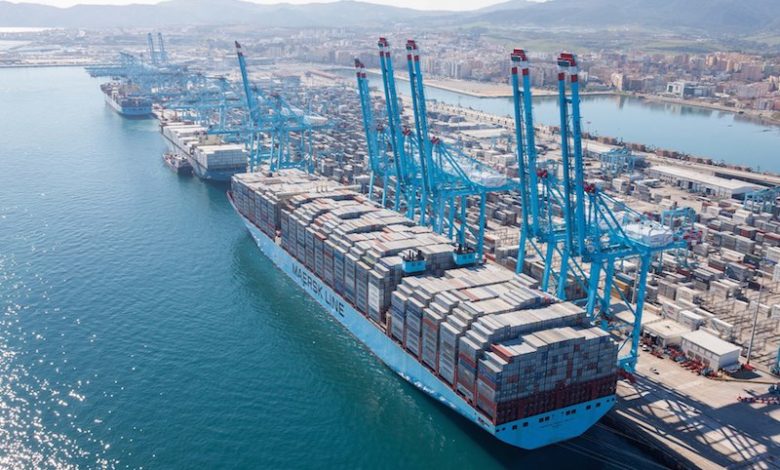Maersk and IBM reveal TradeLens blockchain platform

Maersk and IBM have revealed details of their new blockchain platform. Called TradeLens, the two parties have already managed to get 94 organisations onboard, although the lack of carriers signing up has prompted some criticism.
More than 20 port and terminal operators have joined Maersk Line, Hamburg Sud and Pacific International Lines (PIL) in the new venture.
Customs authorities in the Netherlands, Saudi Arabia, Singapore, Australia and Peru are participating, along with customs brokers Ransa and Güler & Dinamik.
Participation among beneficial cargo owners (BCOs) has grown to include Torre Blanca / Camposol and Umit Bisiklet.
Freight forwarders, transportation and logistics companies including Agility, CEVA Logistics, DAMCO, Kotahi, PLH Trucking Company, Ancotrans and WorldWide Alliance are also currently participating.
TradeLens uses IBM blockchain technology to allow multiple trading partners to collaborate by establishing a single shared view of a transaction without compromising details, privacy or confidentiality.
Using blockchain smart contracts, TradeLens enables digital collaboration across the multiple parties involved in international trade. The trade document module, released under a beta program and called ClearWay, enables importers/exporters, customs brokers, trusted third parties such as Customs, other government agencies, and NGOs to collaborate in cross-organizational business processes and information exchanges, all backed by a secure, non-repudiable audit trail.
During a 12-month trial, Maersk and IBM worked with dozens of ecosystem partners to identify opportunities to prevent delays caused by documentation errors, information delays, and other impediments. One example demonstrated how TradeLens can reduce the transit time of a shipment of packaging materials to a production line in the United States by 40%, avoiding thousands of dollars in cost.
More than 154m shipping events have been captured on the platform, including data such as arrival times of vessels and container gate-in, and documents such as customs releases, commercial invoices and bills of lading. This data is growing at a rate of close to 1m events per day.
“TradeLens uses blockchain technology to create an industry standard for the secure digitisation and transmission of supply chain documents around the world,” commented Peter Levesque, CEO of Modern Terminals. “This initiative will generate tremendous savings for our industry over time while enhancing global supply chain security.”
Standards discussions are actively underway with openshipping.org and work to align the TradeLens APIs with UN/CEFACT standards is in progress. The TradeLens APIs are open and available for developer access and feedback from participants in the platform.
The TradeLens solution is available today through an early adopter program. TradeLens is expected to be fully commercially available by the end of this year.
“We believe blockchain can play an important role in digitizing global shipping, an area of the global economy that moves $4trn of goods every year. However, success with the technology rests on a single factor –bringing the entire ecosystem together around a common approach that benefits all participants equally,” said Bridget van Kralingen, senior vice president at IBM.
Van Kralingen’s comment was picked up by regular Splash columnist Lars Jensen. Writing on LinkedIn, the SeaIntelligence Consulting partner questioned whether the fact that only PIL had signed up to the platform among all the major carriers might be a stumbling block for TradeLens’s success.
“Does this mean that TradeLens might falter due to lack of carrier buy-in?” Jensen questioned. He went on to note however that other carriers might not necessarily need to jump into bed directly with TradeLens.
“Multiple blockchain trials are in progress in the industry, and it is beginning to look less likely that all will coalesce around one specific solution/product. Rather we might see a landscape of varying solutions, but all centered around the adoption of new standards,” Jensen suggested.
